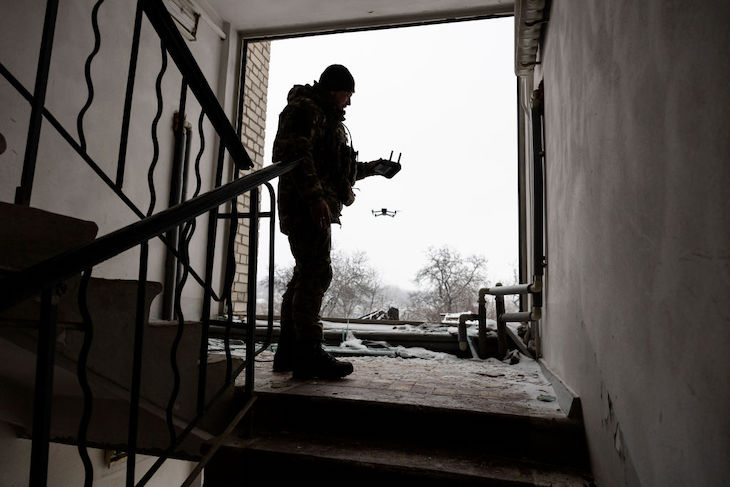
Several years ago, the defeat of Armenian forces by Azerbaijan in clashes in the south Caucasus led to a discussion about whether unmanned aerial vehicles with missiles, or acting as kamikaze-style drones, would put an end to the role of large, expensive lumbering tanks on the battlefield. We now see in Ukraine that there are limitations to what drones can do, especially when they are not deployed in large numbers.
The truth is that these drones can’t survive modern day air defenses
To understand the role of drones on the battlefield, it’s worth making a quick distinction between the large number of machines usually called ‘drones’. There are a plethora of unmanned systems that are now deployed by modern armies. These include new types of unmanned vessels being studied by US forces in the Persian Gulf, everything from small boats to hi-tech sailboards, that can provide navies with eyes at sea that can do more than people in a patrol boat might be able to accomplish. There are also different types of small drones, like the Raven, which is launched the same way a person might throw a paper airplane into the air. It weighs around 4lbs and can fly for up to 90 minutes. US forces conducting a drill in the harsh conditions of Alaska recently used these for reconnaissance.
Is Giorgia Meloni stoking Britain’s migrant crisis?
At the top of the drone food chain are the big drones, like the Global Hawk or Reaper, a surveillance drone and an armed drone respectively. Reapers and their predecessor the Predator gained fame during the US-led global war on terror. But what became of these types of drones now that the world is transitioning back to conventional wars such as Ukraine? The truth is that these drones can’t survive modern day air defenses, as was illustrated when Iran shot down a $200 million (£160 million) Global Hawk in 2020.
When Russia invaded Ukraine, the Ukrainians were able to initially resist using Bayraktar drones they had acquired from Turkey. The New Yorker even claimed these drones had ‘changed the nature of warfare’. The 21-foot long drone can carry small missiles. However, after a year of war it appears most of the Ukrainian Bayraktars have been lost in fighting or due to attrition. It can’t change the nature of warfare if it’s no longer flying in large numbers. This is where the drone problem comes into play in modern war. Countries like Ukraine need large numbers of drones and they need them at all levels, from small drones for infantry platoons, to larger armed drones that can act as a kind of instant air force. However, having just a handful of any one type of system won’t provide air superiority, or enable the drones to have a meaningful impact.
Recent videos show Ukrainians using various ingenious ways to continue to use drones they are likely making locally. These include small drones that can drop munitions on Russian units and others that conduct surveillance. On a long frontline this can be effective at harassing an enemy, but it’s not bringing something new to warfare that artillery or other weapons didn’t do in the past.
Russia invaded Ukraine with a marginal stockpile of drones. Over the past year it has used Iranian kamikaze drones – relatively simplistic but deadly weapons that are not that much more advanced than what the Germans were using against London when they fired V-1s and V-2s during the Second World War. Russia is basically using Iran’s drones to terrorise civilians, but this is not a war-winning technology.
As the world watches Ukraine and tries to learn the lessons of the 21st century’s first major conventional war, the role of the drone in war may be re-evaluated. The conflict in Ukraine is not the same kind of conflict that might develop between modern militaries in the Pacific, such as we are seeing with China’s threats to Taiwan. There is a rapidly growing role for drones, especially knitting them into the hi-tech digital networks that armies now use, meaning drones can be used at all levels of the modern battlefield, from undersea to vessels, to land robots and aerial vehicles, sponging up data and carrying weapons. They are expendable in some cases, and can save lives by not meaning that people can avoid flying dangerous missions, or have to run through minefields. Militaries would be wise to look at Ukraine and send more drones to Kyiv to see what works and what needs a lot more tinkering before it is used in the hi-tech battlefield of the future.
No comments:
Post a Comment